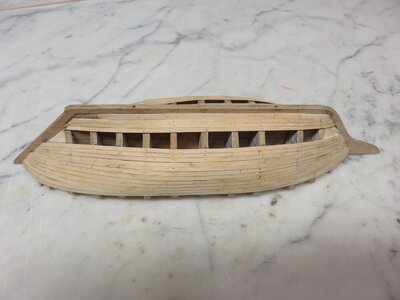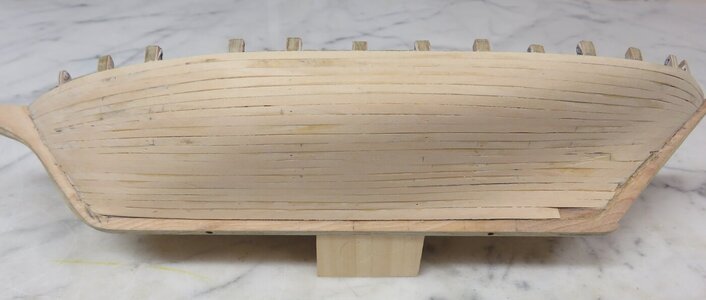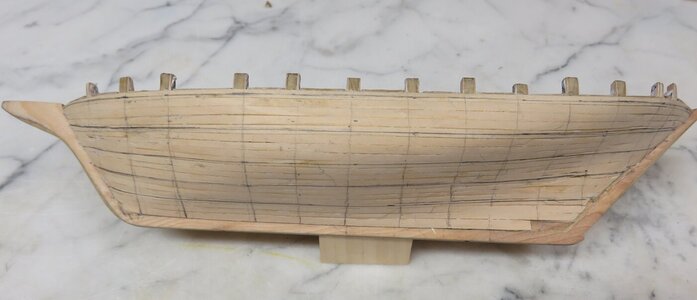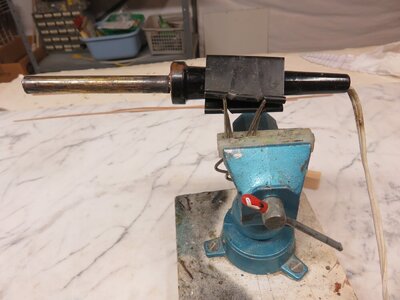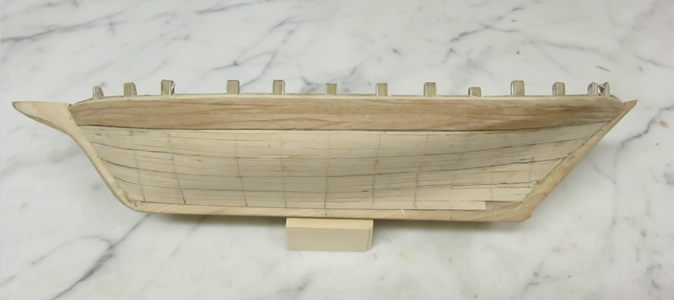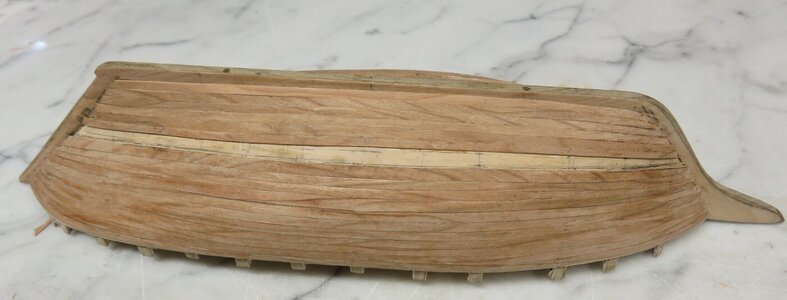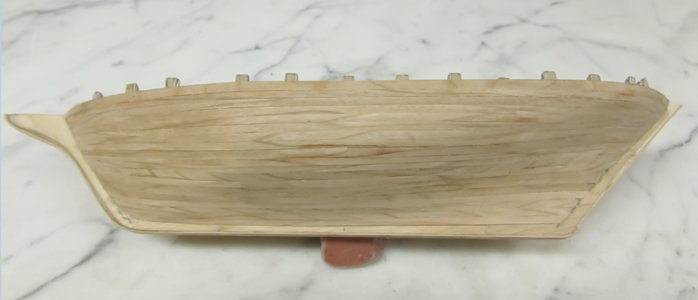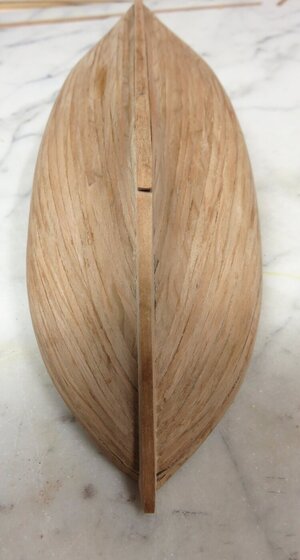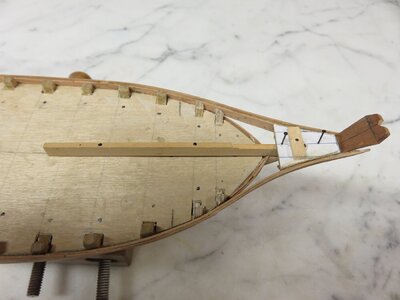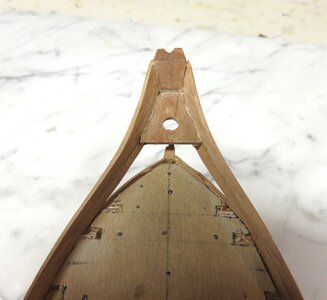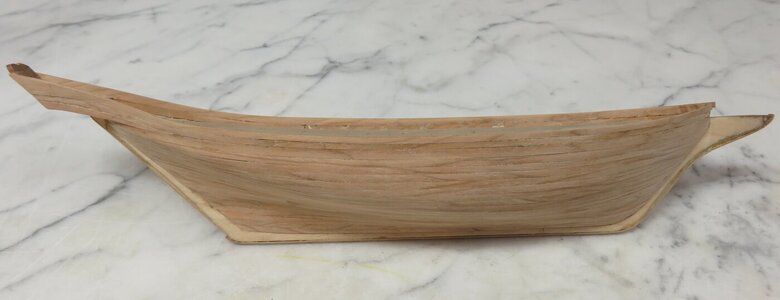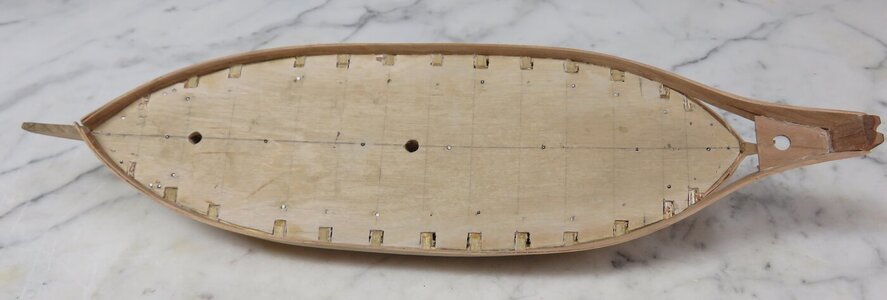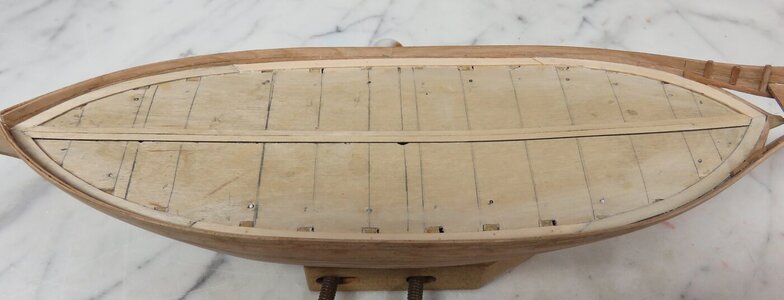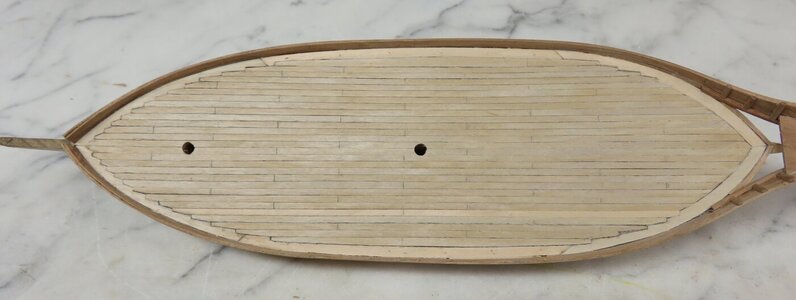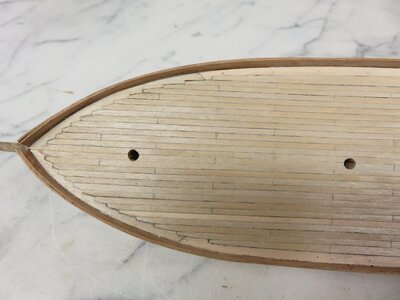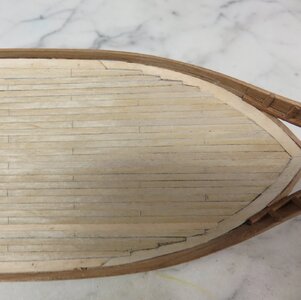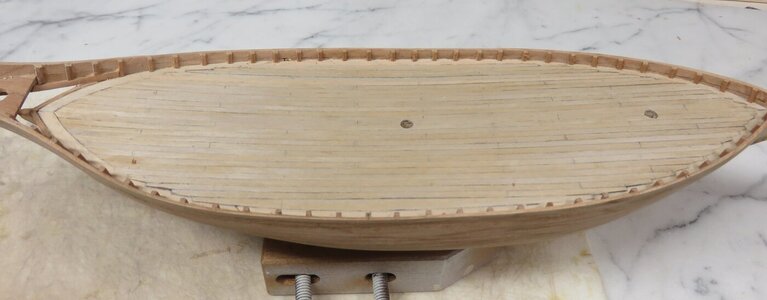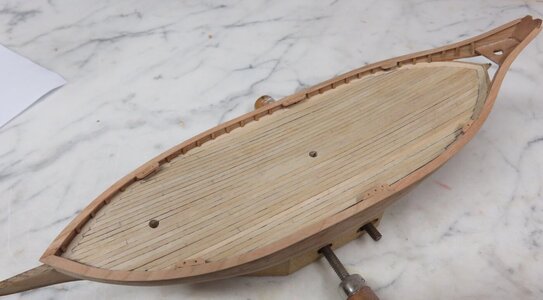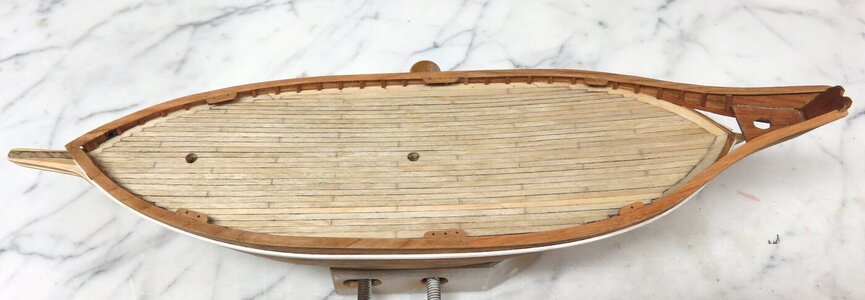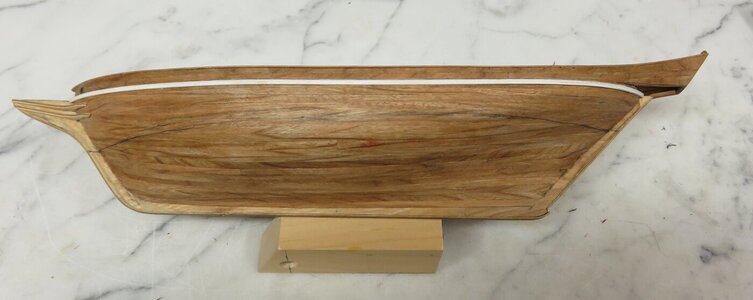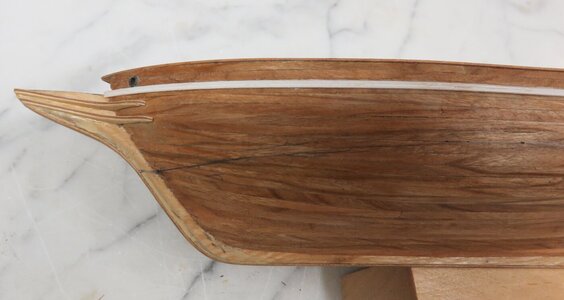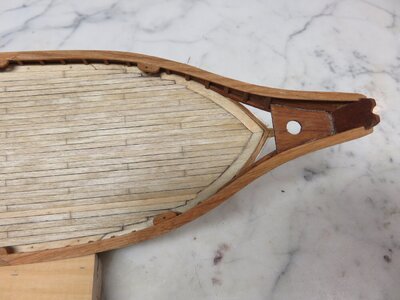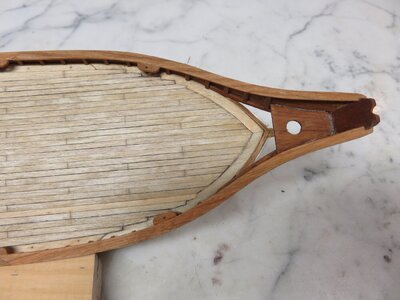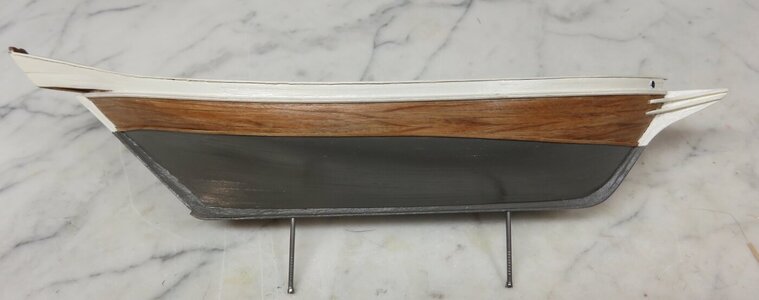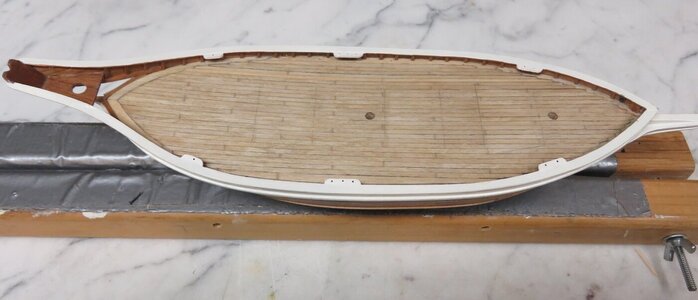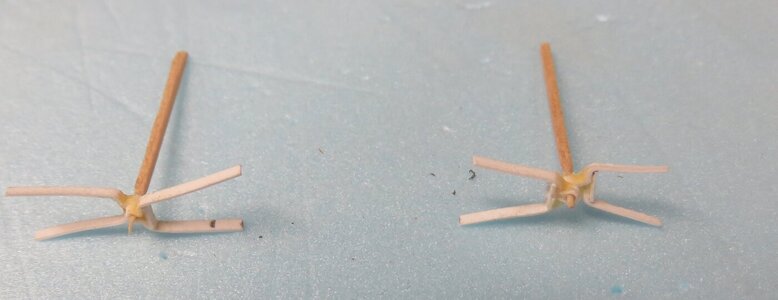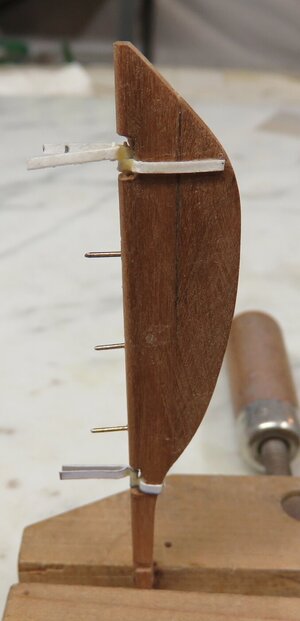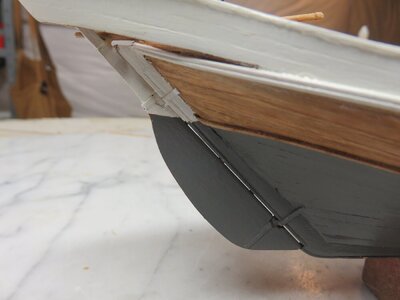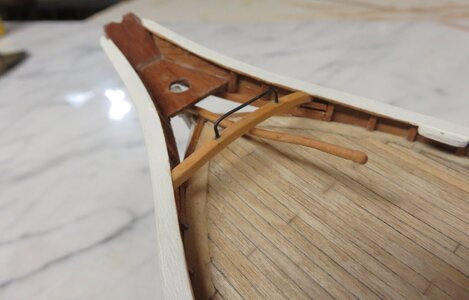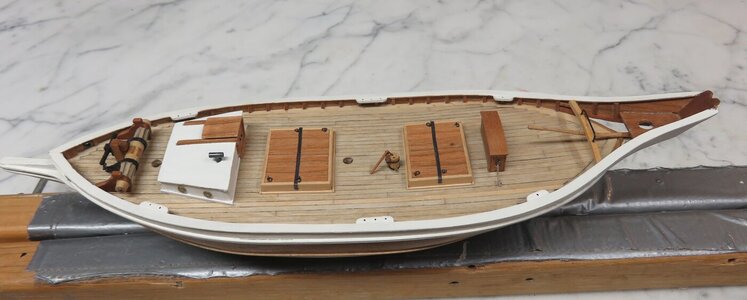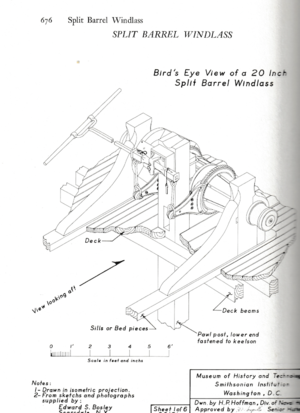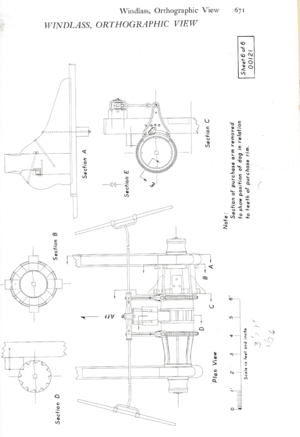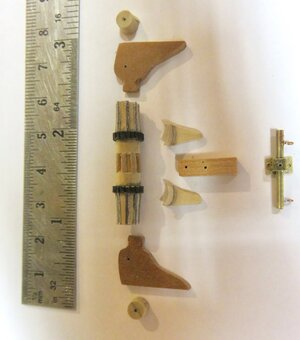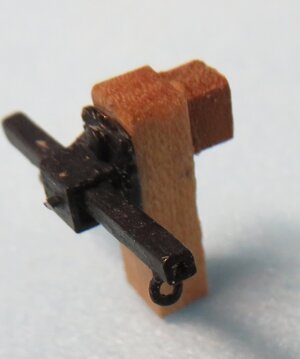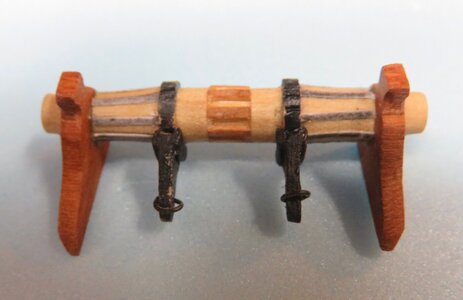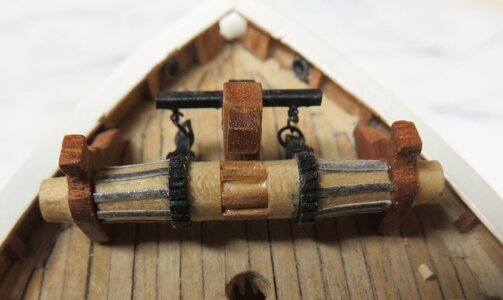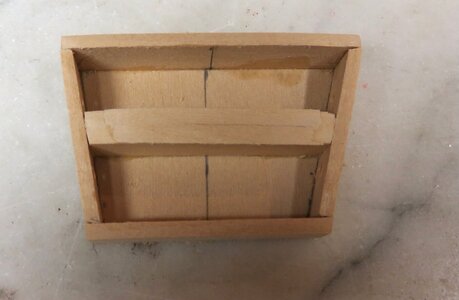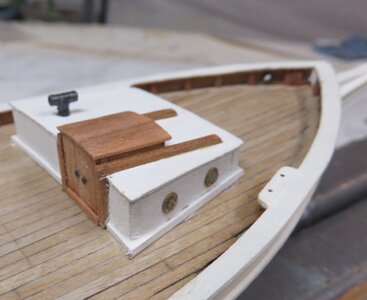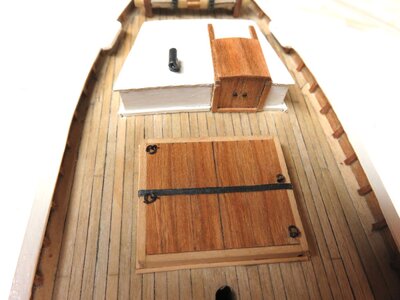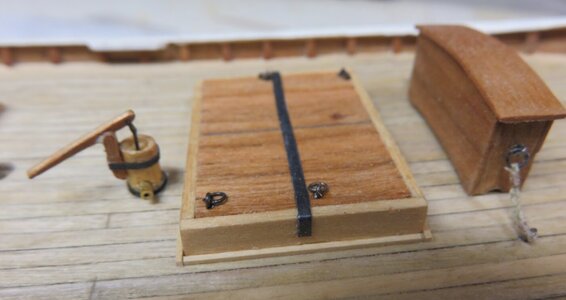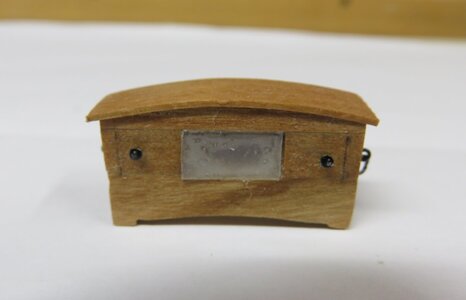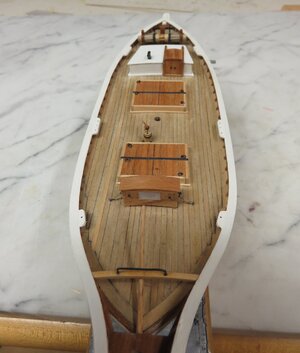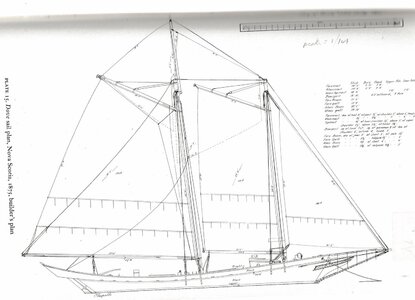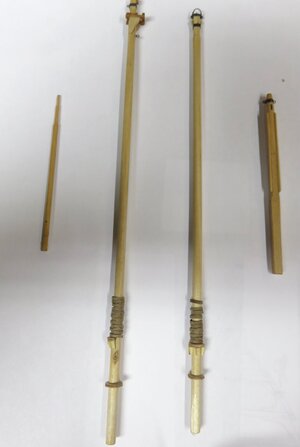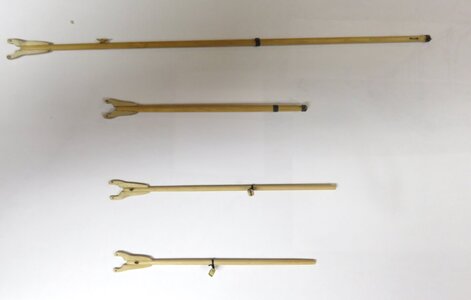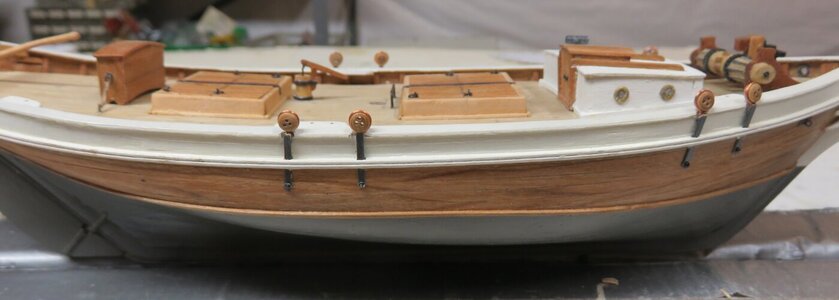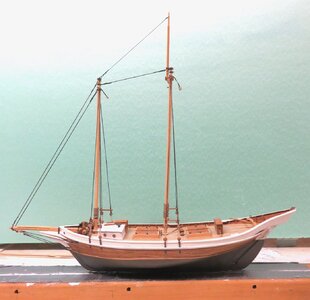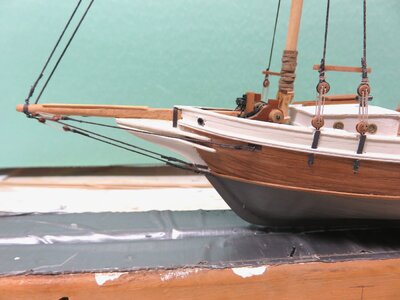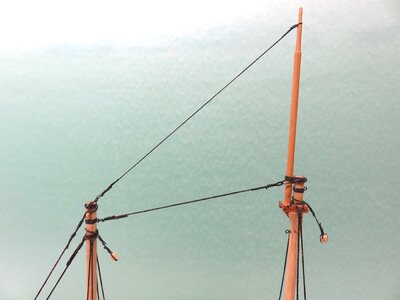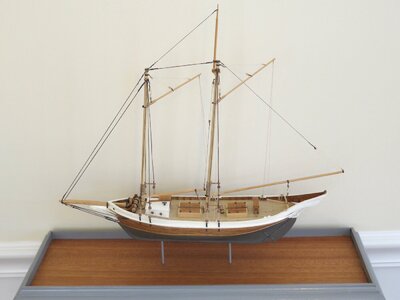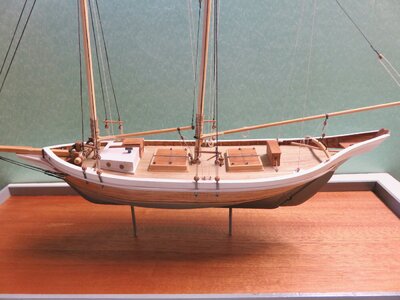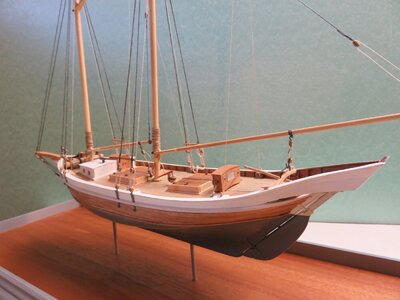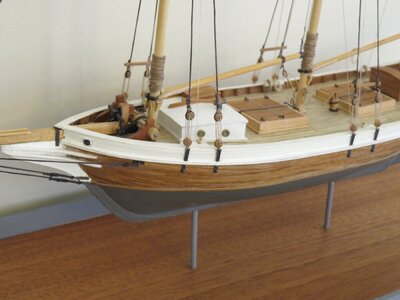In his book “The American Fishing Schooners” (AFS) Howard Chapelle devotes a chapter to the development of the double ended pinkie as a fishing vessel. He also writes about this design as a pleasure craft in “American Sailing Craft”. Chapelle obviously thought highly of the sea worthiness of pinkies since he built one for his personal boat. AFS contains particularly well detailed plans of the pinkie Dove which had an length between perpendiculars of 42'11”. As a result, many models have been made using these plans. In a build log on the Model Ship World site (https://modelshipworld.com/topic/27242-pinky-schooner-dove-by-jlefever-148/), J.L. Le Fever describes building the Dove by both the solid hull and plank on frame techniques and also gives a detailed analysis of the hull design. In this log I will present my version of the Dove as a plank on bulkhead model in 1/48 scale.
For those readers who are interested in building small, this will be the fifth model with a hull length of about 12” that I've posted about on this web site since retiring from building large models of sailing ships.
Plans
Figures 1 and 2 shown the plans for the Dove in “American Fishing Schooners”. There is also a rigging plan that I will display later on. These plans were enlarged to 1/48 scale on a copier.
Figure 1
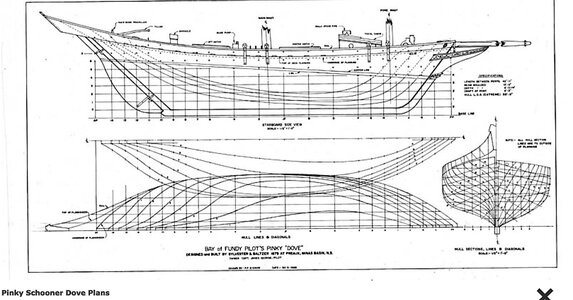
Figure 2
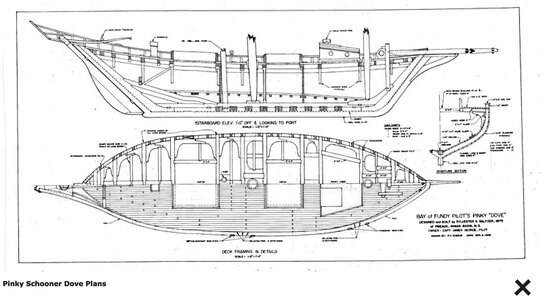
Skeleton Construction
From the body plan, the hull cross sections at 13 station lines were selected for making the bulkheads. Paper templates from the plans were glued onto 3/16” plywood to form the keel piece and bulkheads except for the foremost and two aft most bulkheads which were 1/8” plywood. Per the plans the keel would be about 1/8” in scale but I used 3/16” for greater rigidity. I will later sand the exposed edges of the keel piece to 1/8”.
Figure 3 shows the keel piece and bulkheads and Figure 4 indicates their appearance after dry fitting to check alignment, etc. Note the pockets that have been added to the keel piece to guide positioning of the masts later on.
Figure 3
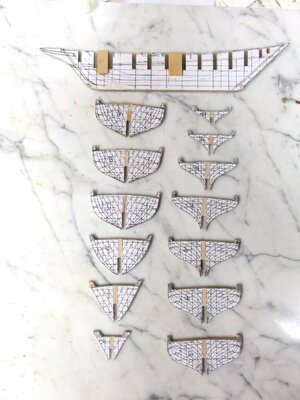
Figure 4
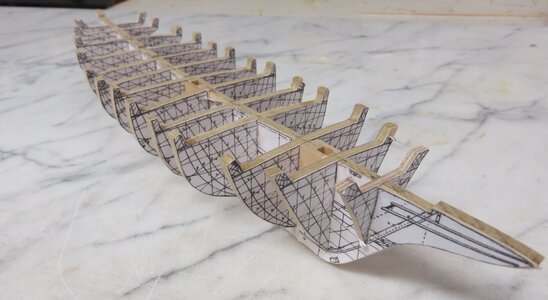
Figures 5 and 6 show the hull after the bulkheads have been glued in and faired and filler pieces added at the bow and stern. A 1/16” x 3/32” stringer was set into notches in the bulkheads to support the edges of the plywood sub deck.
Figure 5
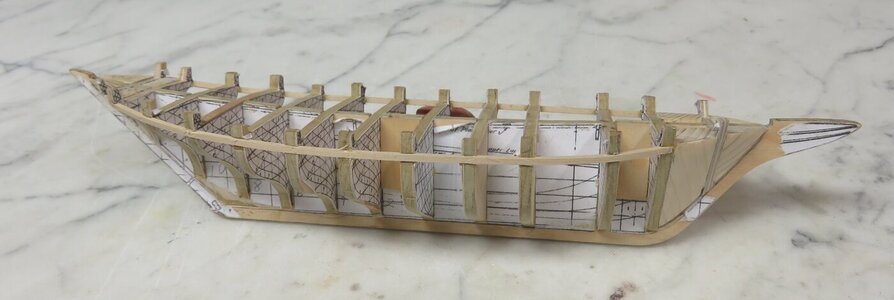
Figure 6
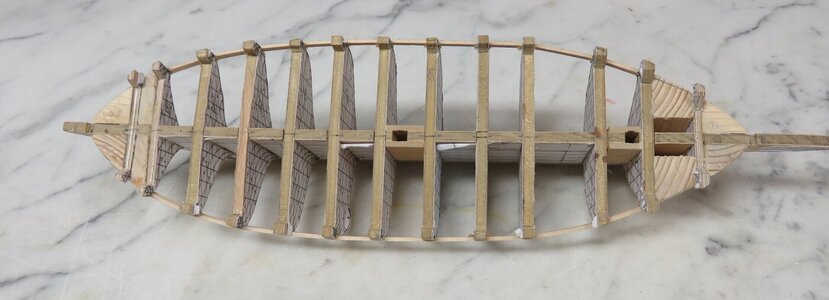
A paper deck pattern was made from the plans, glued to heavy paper, and fitted around the bulkhead extensions (Figure 7). This was then used as a template to cut a sub-deck from 1/32” plywood which was glued and nailed to the surface of the bulkheads (Figures 8 and 9).
Figure 7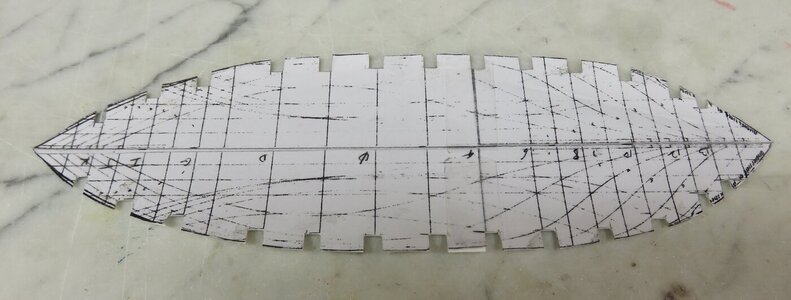
Figure 8
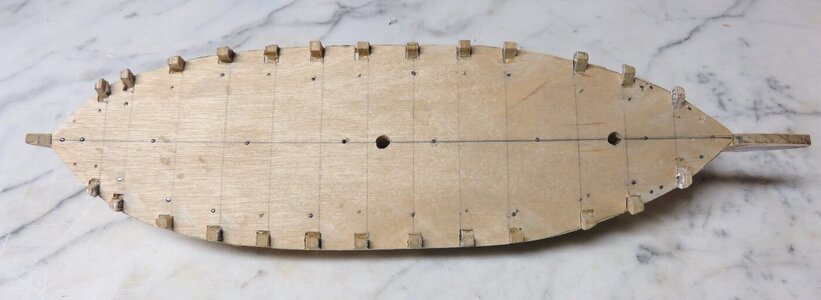
Figure 9

This completes construction of the skeleton and next up is planking.
For those readers who are interested in building small, this will be the fifth model with a hull length of about 12” that I've posted about on this web site since retiring from building large models of sailing ships.
Plans
Figures 1 and 2 shown the plans for the Dove in “American Fishing Schooners”. There is also a rigging plan that I will display later on. These plans were enlarged to 1/48 scale on a copier.
Figure 1

Figure 2

Skeleton Construction
From the body plan, the hull cross sections at 13 station lines were selected for making the bulkheads. Paper templates from the plans were glued onto 3/16” plywood to form the keel piece and bulkheads except for the foremost and two aft most bulkheads which were 1/8” plywood. Per the plans the keel would be about 1/8” in scale but I used 3/16” for greater rigidity. I will later sand the exposed edges of the keel piece to 1/8”.
Figure 3 shows the keel piece and bulkheads and Figure 4 indicates their appearance after dry fitting to check alignment, etc. Note the pockets that have been added to the keel piece to guide positioning of the masts later on.
Figure 3

Figure 4

Figures 5 and 6 show the hull after the bulkheads have been glued in and faired and filler pieces added at the bow and stern. A 1/16” x 3/32” stringer was set into notches in the bulkheads to support the edges of the plywood sub deck.
Figure 5

Figure 6

A paper deck pattern was made from the plans, glued to heavy paper, and fitted around the bulkhead extensions (Figure 7). This was then used as a template to cut a sub-deck from 1/32” plywood which was glued and nailed to the surface of the bulkheads (Figures 8 and 9).
Figure 7

Figure 8

Figure 9

This completes construction of the skeleton and next up is planking.



